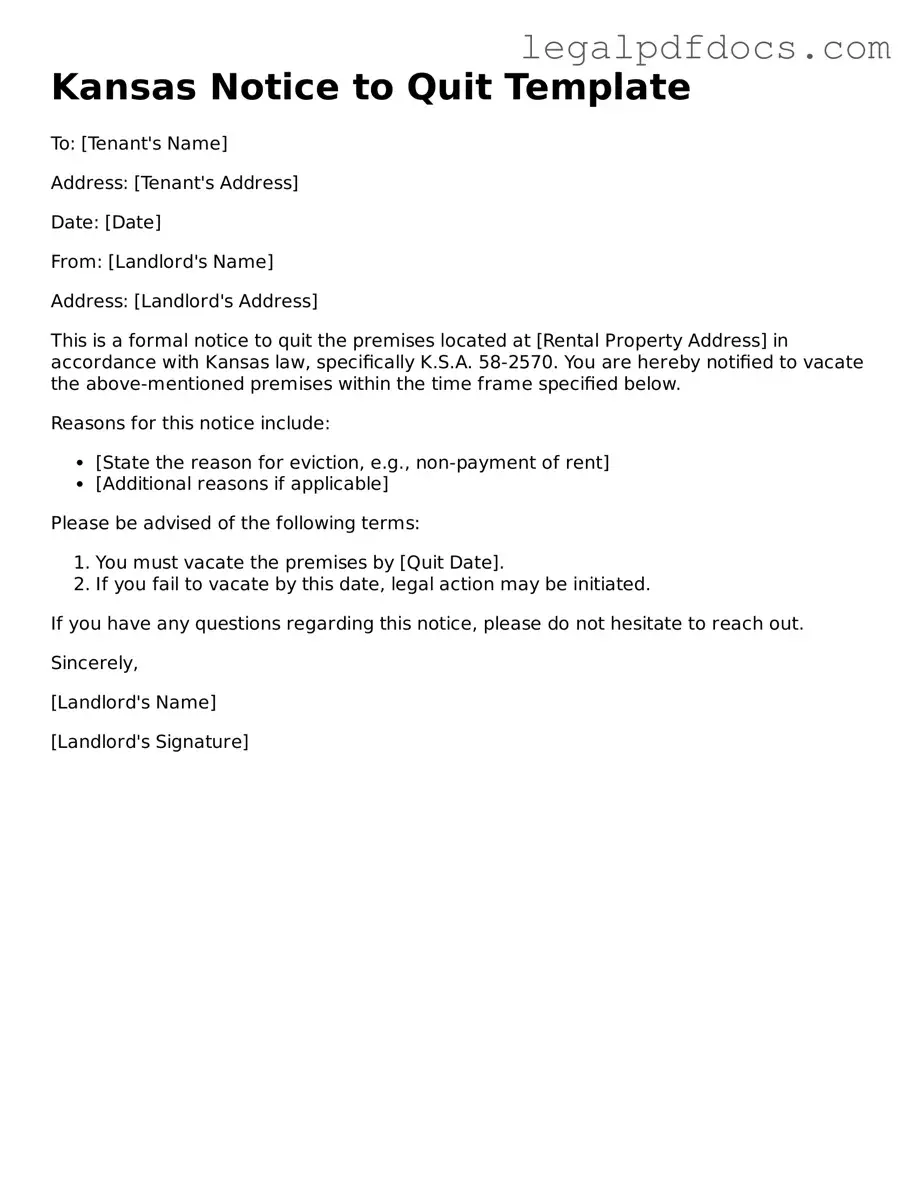Official Notice to Quit Form for Kansas
The Kansas Notice to Quit form is a legal document used by landlords to formally notify tenants that they must vacate the rental property. This notice serves as an important step in the eviction process, ensuring that tenants are aware of their need to leave the premises within a specified timeframe. If you're a landlord or tenant in Kansas, understanding this form is crucial for navigating rental agreements effectively.
Ready to fill out the Kansas Notice to Quit form? Click the button below to get started!
Open Notice to Quit Editor Here
